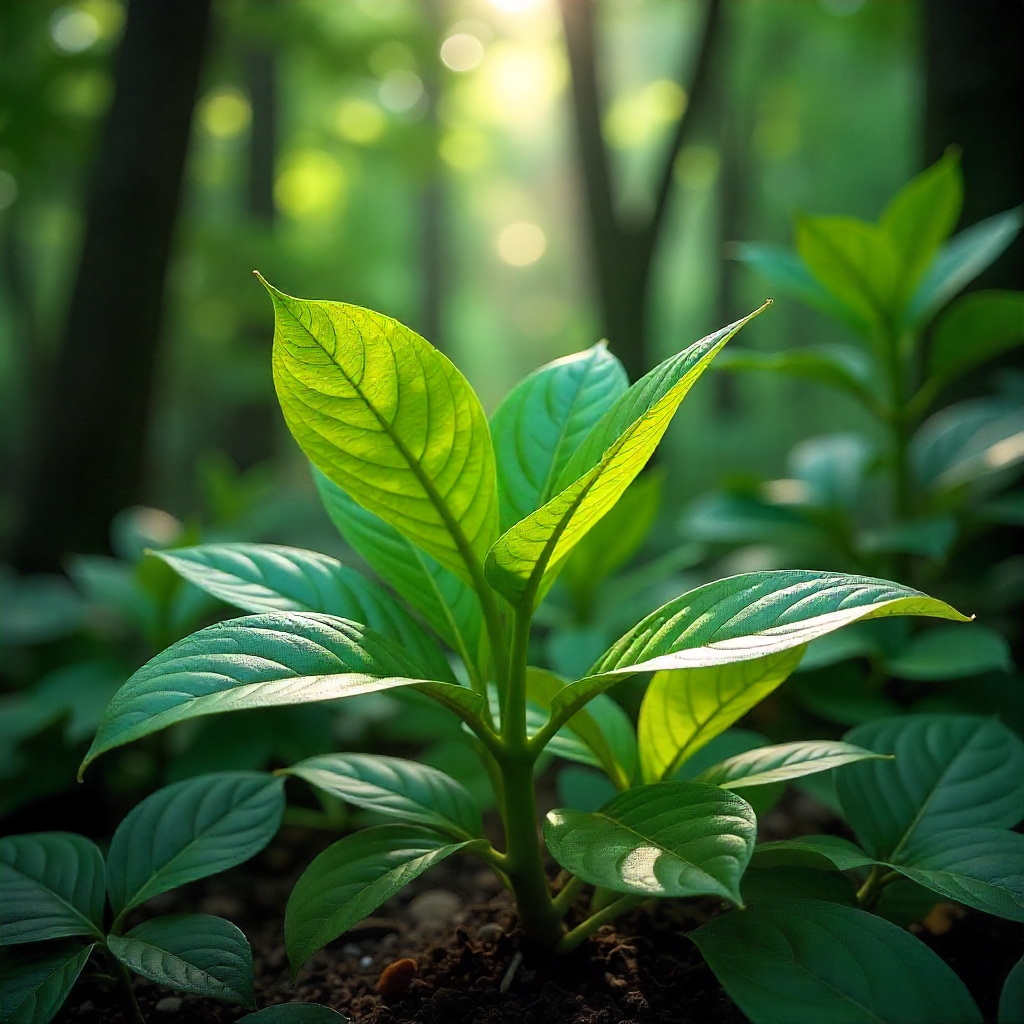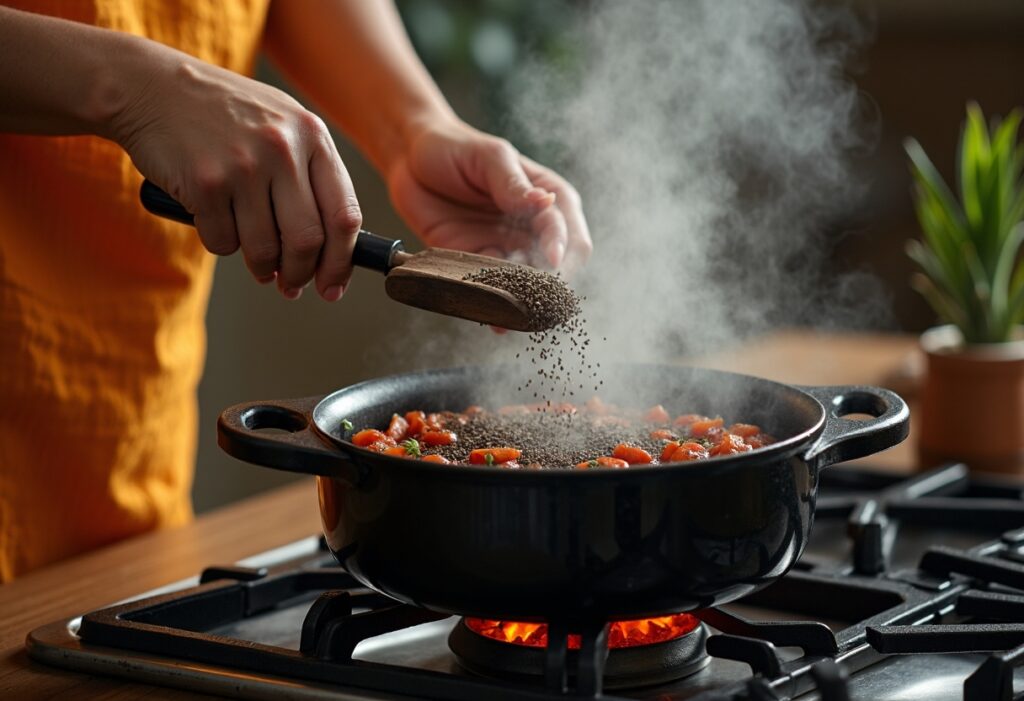If you’ve ever walked through the thick forests of India, Sri Lanka, or Southeast Asia, you may have brushed past a small tree with rough bark, serrated leaves, and a quiet but commanding presence. That’s Agnimantha (Premna serratifolia), an ancient medicinal plant deeply woven into Ayurveda. Classified under the Dashamoola (the “Ten Roots” used in Ayurvedic formulations), Agnimantha has long been prized for its healing properties. Known by many names—Arani, Munja, Premna herb—it thrives in tropical and subtropical climates, growing up to 3–4 meters in height, often near riverbanks or open scrublands. Its very name, Agnimantha, suggests power and fire—signifying the herb’s ability to energize, cleanse, and restore balance.
But why should you, in today’s modern world, care about Agnimantha? Because it connects the wisdom of ancient healing with your everyday health needs. Whether it’s joint pain, digestive issues, inflammation, or low immunity, this plant has been trusted for centuries. Today, researchers are rediscovering what Ayurvedic healers knew long ago: Agnimantha contains powerful bioactive compounds with anti-inflammatory, analgesic, and rejuvenating properties. In a time when people are turning back to natural remedies, Agnimantha stands out as a timeless botanical ally.
7 Best Alternatives to Agnimantha (Premna serratifolia)
While Agnimantha is powerful, several other herbs are used similarly across different traditions. Here are seven:
- Dashamoola Blend (India)
A combination of ten roots, including Agnimantha, used in Ayurveda for balancing Vata disorders, arthritis, and respiratory ailments. Found across India. - Arjuna (Terminalia arjuna, India)
Known as the “heart herb,” Arjuna bark is used for cardiovascular strength, much like Agnimantha supports musculoskeletal health. Commonly cultivated along riverbanks in India. - Guduchi (Tinospora cordifolia, South Asia)
Also called Amrita or the “heavenly elixir,” Guduchi boosts immunity and detoxifies the system. Widely grown in India, Sri Lanka, and Nepal. - Shallaki (Boswellia serrata, India & Middle East)
A resin used for joint pain, inflammation, and respiratory conditions. Popular in India and exported globally. - Moringa (Moringa oleifera, Africa & Asia)
A powerhouse “superfood” tree with leaves, seeds, and pods that improve digestion, immunity, and strength. Native to India but now grown worldwide. - Bala (Sida cordifolia, South Asia)
Known as “country mallow,” Bala strengthens muscles, supports respiratory health, and is often paired with Agnimantha in formulations. - Ashwagandha (Withania somnifera, India & Middle East)
Called the “Indian Ginseng,” Ashwagandha supports energy, stress relief, and rejuvenation. Widely grown in India and now popular globally.
When and Where
To truly understand Agnimantha, you need to step into the rhythm of its seasons. Traditionally, Agnimantha is harvested during the post-monsoon season when the plant’s roots and bark are at their most potent. Farmers and forest gatherers in India carefully uproot mature plants, ensuring sustainable practices by leaving younger shrubs untouched to regrow.
Where is it found? Agnimantha thrives in India, Sri Lanka, Myanmar, Thailand, and Indonesia, particularly in lowland forests and riverbanks. It prefers moist but well-drained soil and can survive in semi-arid regions too.
How is it sourced and prepared? Traditionally, the roots and bark are collected, dried, and then ground into powders or boiled into decoctions. Leaves are plucked fresh to prepare pastes for topical use. In villages, elders still prepare Agnimantha Kashayam (a decoction) for fever, arthritis, and weakness.
Who uses it? Ayurveda, Siddha, and Unani systems all incorporate Agnimantha. Tribal healers in India and Sri Lanka also use it for fevers, cough, and snakebites.
Varieties: Apart from Premna serratifolia, related species like Premna integrifolia are sometimes used interchangeably in traditional medicine.
Who Uses Agnimantha (Premna serratifolia)?
From Ayurvedic doctors in Kerala to tribal healers in Chhattisgarh, Agnimantha has been a trusted herb for centuries. Women in rural India often used it after childbirth for recovery, while elders relied on it to ease arthritis pain. Siddha practitioners in Tamil Nadu consider it essential for balancing Vata disorders. Even today, Ayurvedic pharmacies across India and Sri Lanka prepare tonics and oils containing Agnimantha.
Why Use Agnimantha (Premna serratifolia)?
You might wonder: What makes Agnimantha worth your attention? Here’s why people turn to it:
- Pain relief: Its anti-inflammatory properties make it valuable in treating arthritis, gout, and joint stiffness.
- Digestive health: Used for indigestion, bloating, and abdominal pain.
- Fever management: Traditionally given in febrile conditions.
- Respiratory support: Helps with asthma, cough, and bronchitis.
- Postpartum recovery: Supports uterine health and overall strength in women.
- Rejuvenation: As part of Dashamoola, it revitalizes body tissues and balances doshas.
Which Parts of Agnimantha Are Used?
- Roots & Bark: Primary components in decoctions for arthritis, fever, and weakness.
- Leaves: Used in poultices for skin diseases, wounds, and swelling.
- Stems: Occasionally used in formulations for digestion.
- Flowers & Fruits: Rarely used but sometimes incorporated in local remedies for cough.
How to Use Agnimantha (Premna serratifolia)?
Traditionally, Agnimantha is used in several forms:
- Kashayam (decoction): Roots/bark boiled in water, consumed for fever and joint pain.
- Powder (Churna): Dried root or bark powder mixed with honey or warm water.
- Paste: Fresh leaves crushed and applied to wounds or inflamed joints.
- Oil: Used in Ayurvedic massages for arthritis and back pain.
Precautions:
- Avoid excess use during pregnancy unless guided by an Ayurvedic doctor.
- May interact with medications for blood pressure or diabetes.
- Always consult a qualified practitioner before starting long-term use.
Important Facts About Agnimantha (Premna serratifolia)
- Botanical family: Lamiaceae (mint family).
- Chemical components: Alkaloids, flavonoids, tannins, and essential oils.
- Research findings: Studies suggest anti-inflammatory, antioxidant, and antimicrobial activity.
- Cultural note: Considered part of the sacred Dashamoola, symbolizing strength and healing.
- Side effects: Generally safe, but overuse may cause digestive irritation.
FAQs on Agnimantha (Premna serratifolia)
1. Is Agnimantha safe to use?
Yes, when used under Ayurvedic guidance. Overuse without supervision can cause side effects.
2. Can it help with arthritis?
Yes, its anti-inflammatory properties make it highly valued for joint and bone health.
3. Where can I buy Agnimantha?
Available in Ayurvedic pharmacies across India, Sri Lanka, and online herbal stores.
4. How fast does it show effects?
Relief may be felt within a few days for fevers or digestion, but chronic issues like arthritis need consistent use.
5. Are there interactions with medications?
Possible interactions with anti-hypertensive or anti-diabetic drugs—consult your doctor.
6. Can pregnant women take it?
Not without medical supervision; traditionally used postpartum, but caution is advised during pregnancy.
Conclusion
Agnimantha (Premna serratifolia) is more than just a plant—it’s a living tradition, a bridge between ancient wisdom and modern wellness. For centuries, it has been trusted to bring balance, strength, and vitality. From easing joint pain to rejuvenating the body, it holds a respected place in Ayurveda’s Dashamoola group.
As you consider exploring this herb, remember that its power lies not just in its medicinal properties but in the cultural heritage it carries. Agnimantha reminds us that healing doesn’t always come from a lab—it often comes from nature, forests, and traditions passed down for generations.
If you’re seeking a natural ally for strength, recovery, or balance, Agnimantha may just be the herb your ancestors knew and your body still craves. Always use it responsibly and with proper guidance—because nature’s treasures shine brightest when treated with respect.


